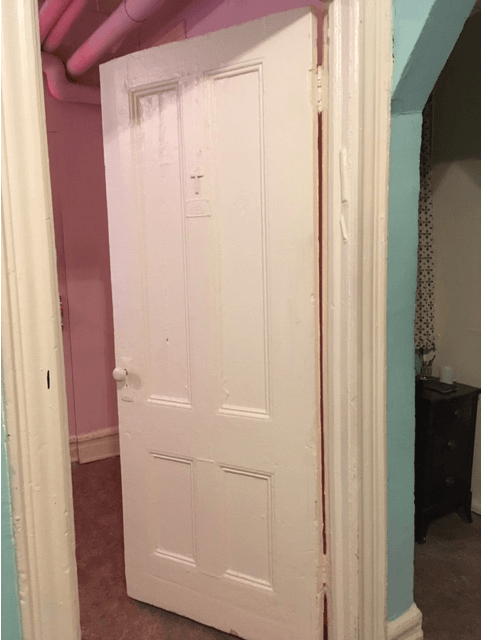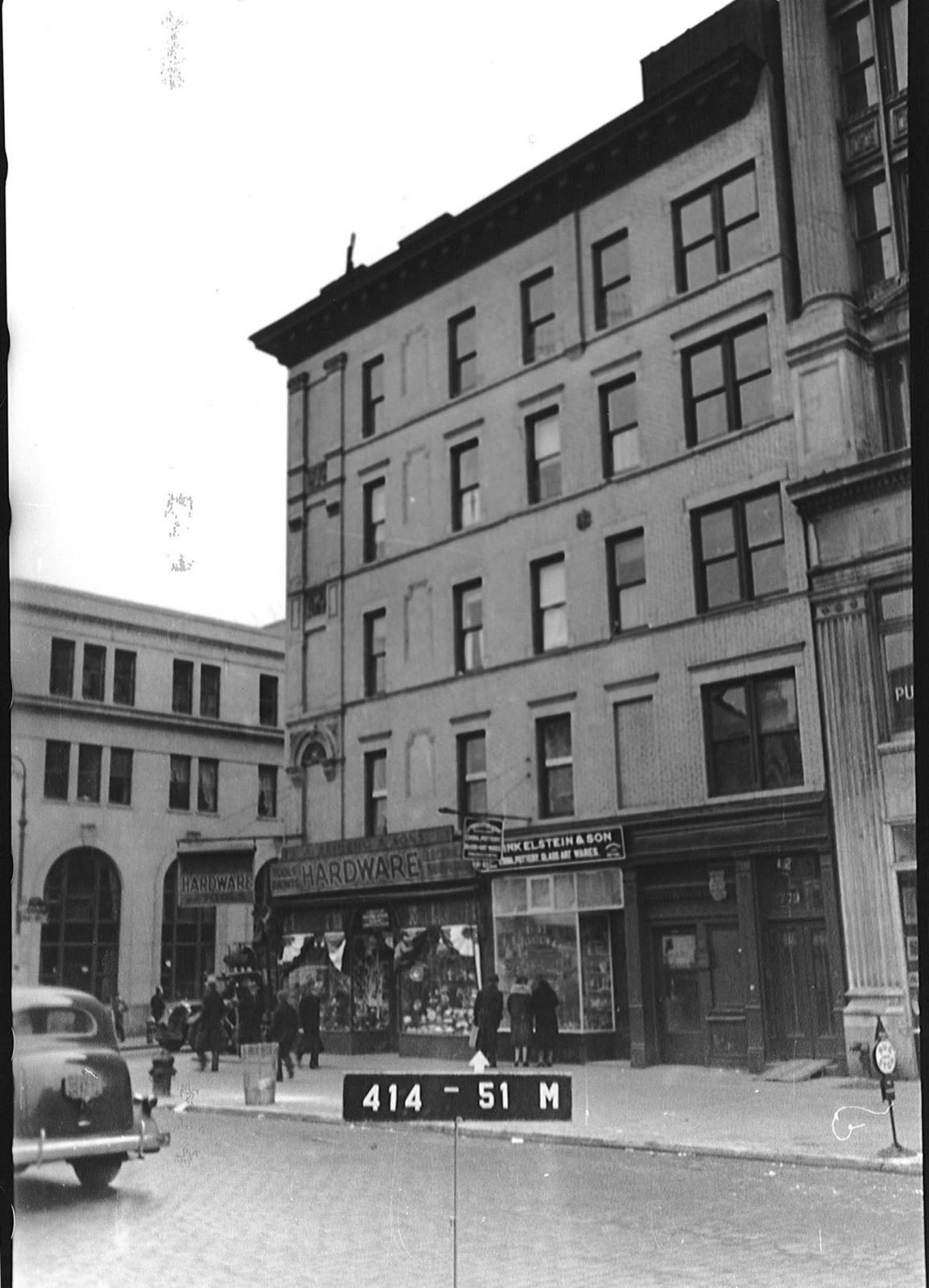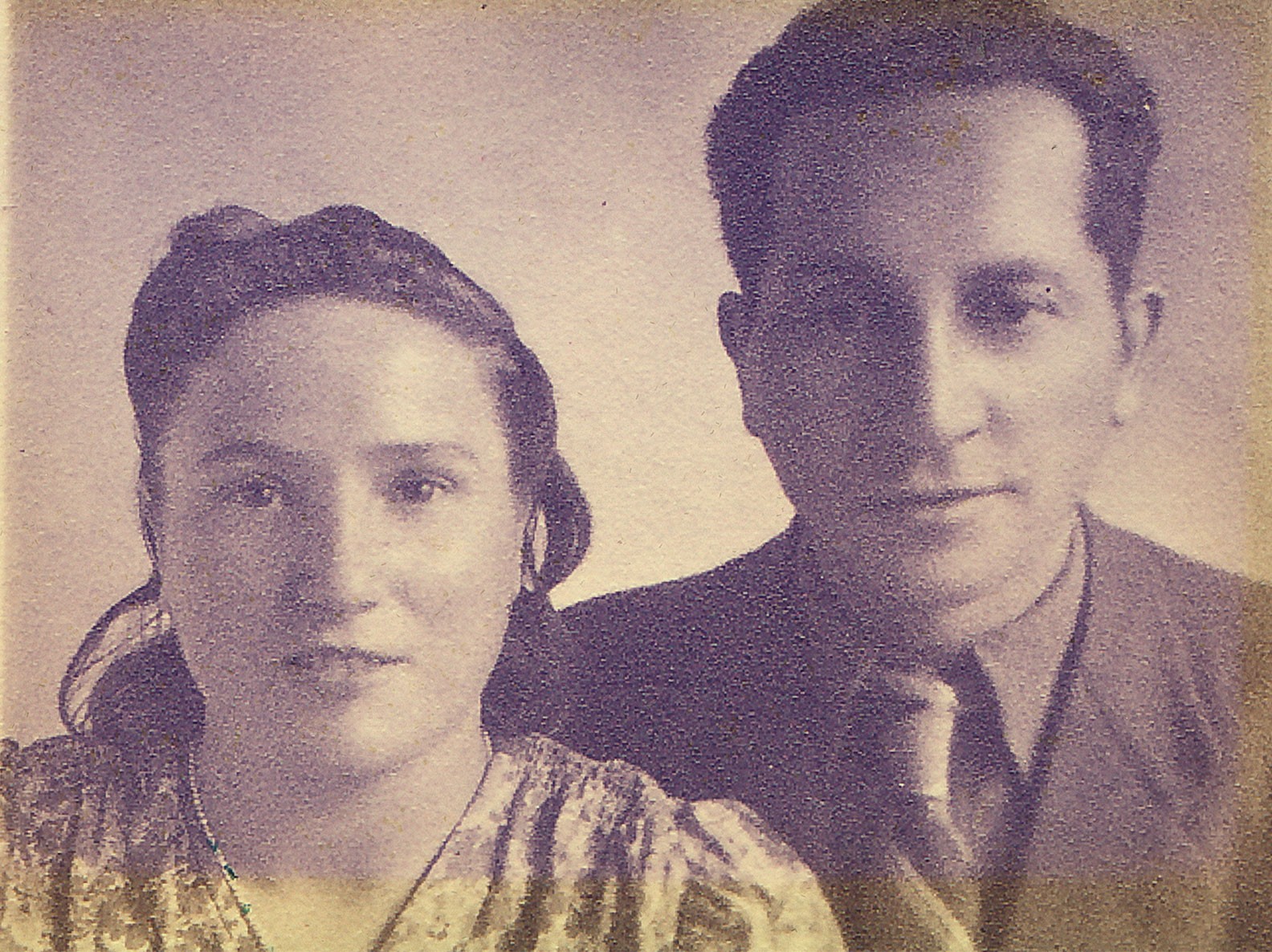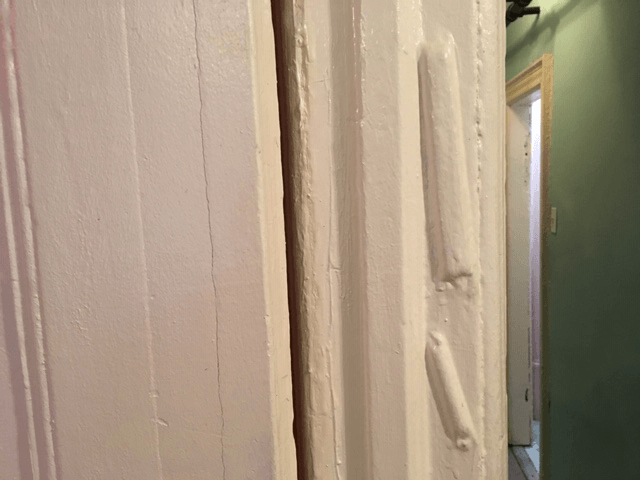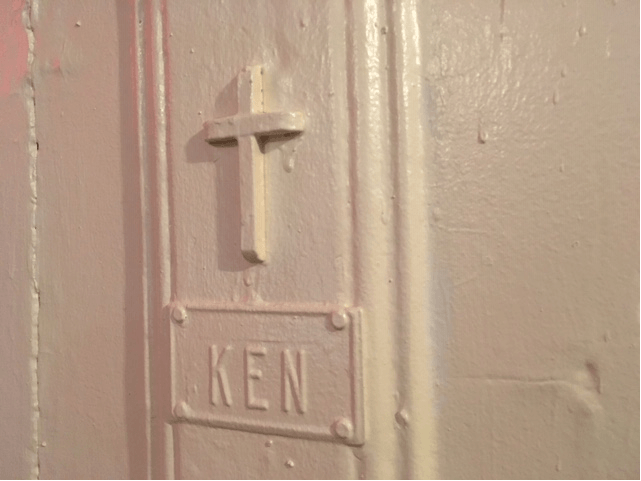Today, this thickly painted four-paneled wooden door opens onto the recreated bedroom of Bella and Blima, the American born daughters of Kalman and Regina Epstein. Both Kalman and Regina were Holocaust Survivors who arrived to New York City as Refugees in 1947 through an Executive Order passed by Harry Truman two years earlier. This Executive Order granted amnesty to people who were displaced as a result of the Second World War. By the mid 1950’s, the Epstein family were residents of apartment #7 of 81 Delancey. Their family story lives-on and is celebrated as a part of the Under One Roof tour. Through close examination of the details of their daily life, the ordinary becomes extraordinary; and in the same fashion, this undistinguished cream-colored doorway becomes a portal opening onto the messy wonderful fullness of life on Lower East Side.
The tenement house at 81 Delancey has a long history dating back to 1888. What today appears to be a single corner building was, in 1888, three distinct Old-Law tenements situated in the middle of the block between Delancey and Broome Streets. These five-story tenement houses at 103, 105 and 107 Orchard each consisted of 20 separate three-room apartments built around a central airshaft. Between 1903 and 1905 the tenements north of 103-107 Orchard were raised to make way for transportation approaching the newly constructed Williamsburg Bridge- essentially doubling the width of Delancey Street.
Joseph Marcus, a Russian immigrant and successful garment manufacturer, purchased these three tenements in 1906. Over the next decade he undertook a series of construction projects that not only took advantage of the corner location but radically transformed the interior apartments. By 1916 the tenements at 103, 105, and 107 were combined into one building with 81 Delancey as the new residential address. The interior apartments were radically altered to offer more living space and better amenities. Moreover, the rear half of the tenement was cut away to make room for a new building designed as the headquarters of Marcus’ newly founded Bank of the Unites States. When the dust finally settled, the tenement at 81 Delancey was in a category of its own. But Marcus’ vison as the landlord, didn’t come without a fight.
